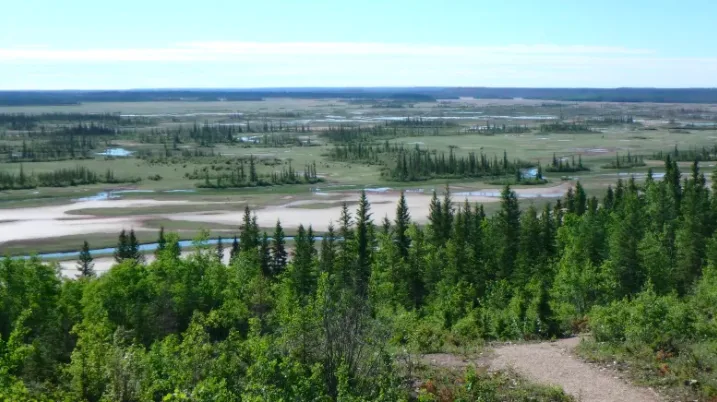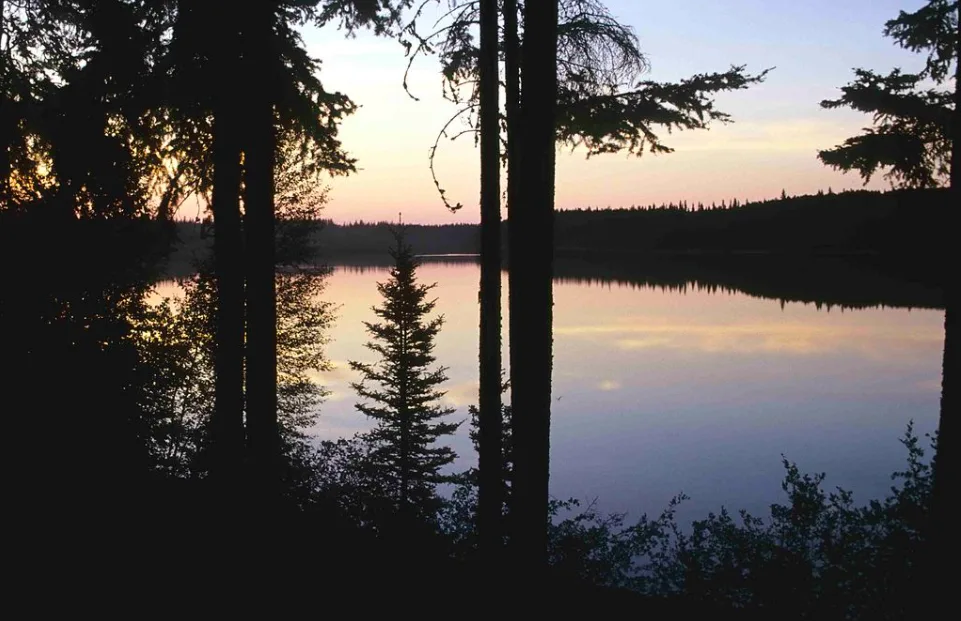
Canada’s largest national park at risk of losing world heritage status
The chief of the Mikisew Cree First Nation wants his people to play a bigger role in managing Wood Buffalo National Park, a world heritage site that straddles the Alberta-N.W.T. border and is at risk of losing its status.
Canada's federal government submitted a progress report to UNESCO updating its conservation efforts last month, nearly three weeks after its Dec. 1 deadline. Ottawa also announced an additional $60 million in funding over three years to implement its action plan to protect the park.
"How is that [funding] going to be managed? We need to be part of that," said Chief Peter Powder in a recent interview with The Trailbreaker.
"There's a lot of people to collaborate with to make sure that we get what we are looking for. We want to protect our Wood Buffalo National Park, want to protect the water levels and protect our animals. So we need to talk to a lot of people."

Pine Lake, Wood Buffalo National Park, Alberta, Canada. Credit: Ansgar Walk/ Wikimedia Commons. (CC BY-SA 2.5)
The 44,000-square-kilometre park is Canada's largest national park and home to one of the largest free-roaming wood bison herds in the world. It also includes the last remaining nesting ground of the endangered whooping crane and contains one of the world's largest freshwater deltas.
Last year, UNESCO indicated the park's world heritage status could be at risk because of climate change and impacts from hydro development in B.C. and oilsands projects in Alberta.
UNESCO will review Canada's progress report this summer to determine whether the park will remain a world heritage site.
'COLLABORATION' AND 'DUE DILIGENCE'
For 35 years, Powder worked in the oilsands. He said he wants more involvement in how tailings are contained and managed, just one piece of the larger puzzle to protect the park that involves a multitude of players including different levels of government and First Nations.
The Mikisew Cree First Nation is one of 11 Indigenous partners in Alberta and the N.W.T. that Parks Canada has been working with to manage the park.
RELATED: Climate change is now the No. 1 threat to World Heritage sites, report finds
"I use the word collaboration. That's a big word these days. That's what we're going to have to be doing with any future management with the park," Powder said.
He said he will be satisfied if, by the summer, when the report is before UNESCO, people in his community are in management positions and he sees more of the federal government's 142 point action plan to protect the park carried out.
"We need to do our due diligence," he said. "We need to make sure we hold people accountable."
Based on an interview by Juanita Taylor, produced by Keith MacNeill
This article was originally published by CBC News.
Thumbnail credit: Lennard Plantz/CBC






